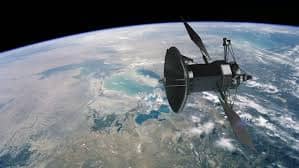It seems that space exploration has begun again! On May 30th the SpaceX mission to take 2 men to the International Space Station was a success and has started a new thirst for space travel, but this time in the commercial sector. The SpaceX mission was funded entirely by Elon Musk. One of the most common items that we are used to seeing in space (either as they fly over at night) or in news reports when data is fed back to earth, is that of the satellite. Satellites are incredible designs that require the meticulous insertion of electrical components into the metal fabric, which can be achieved with Tapping Machines like the ones from https://www.cotswold-machinery-sales.co.uk/roscamat/electric-tapping-machines/roscamat-mosquito-electric-tapping-machine/.
Separating satellites into different types is no easy task. One way to classify them is to look at how they orbit the Earth. There are two types of orbit – elliptical and circular. Some satellites start out on an elliptical orbit and then after some nudging from small rockets, will change to a circular orbit. Other satellites move in a permanent elliptical orbit, known as Molniya orbits. These orbits are normally north to south, travelling over the Earth’s poles and completing the orbit in around 12 minutes.
Satellites that pass over the Earth’s poles do so on each rotation and much of the Earth is covered during a polar orbit. For this reason, they are often used as mapping and photography satellites. Weather forecasting services also rely on a global network of polar satellites as they cover the whole globe every 12 hours.
Satellites can also be thought of in terms of what they are looking at. The majority of satellites sent into orbit in the last few decades have been looking down towards our planet. As such, they are fitted with cameras and light wave technology. They are able to see the world through different wavelengths of light, including ultraviolet and infrared. This has provided us with cutting edge views of our changing planet. Nowadays, a small number are looking out into space, capturing images of planets, galaxies and faraway stars, continually scanning for comets or asteroids that could be on our way to collide with Earth!





